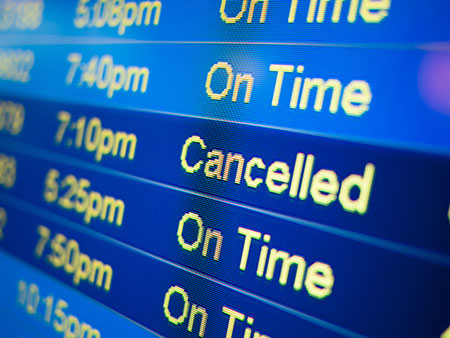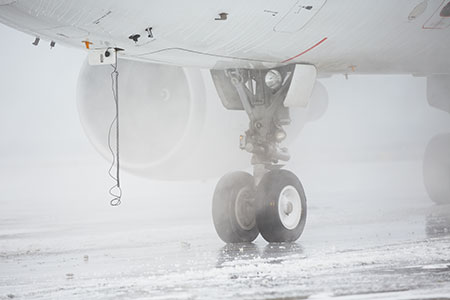Cancellations & Weather Policies

Cancellations
Cancellation policies vary with each air charter operator. In many instances, if the crew has not been called to report and the aircraft has not left its base, there is a good chance a cancellation penalty will not be charged. On the other hand, some air charter operators have 24 or 48 hour cancellation penalties which can range from a two hour minimum on the aircraft to as much as 100% of the cost of the air charter.
With large airliners, cancellation policies can inure from the time you sign the contract and continue to escalate as the departure date draws near. Typically, these can range from 25% on cancellations within 90 days, 50% within 60 days and 100% within 30 days before departure. Cancellation charges are levied because, once you book the aircraft, it is taken off the market for the time period of your pending air charter. It is a form of insurance for the charter operator who will then generate revenue on the aircraft, whether it flies or not.
If there is a chance that you may have to cancel an air charter, please notify us as soon as possible and we will make every attempt to minimize the charge for you. Please remember, the air charter operator makes the final determination.

Inclement Weather
In most cases, weather will not affect your flight. However, your air charter cannot depart if the weather forecasts cannot guarantee a safe flight or if weather at the destination airport is below these minimums:
- Instrument Landing Systems (ILS) require a minimum of ½ mile visibility at the end of the runways and the clouds must be at least 200 feet or higher above the ground. Most major airports are equipped with these precision ILS approaches.
- Non-precision approaches, such as Non-directional Beacons (NDB) or Very High Frequency Omni-directional Range (VOR) approaches, have higher minimums. These are usually located at rural airports and require 1 mile visibility at the end of the runway and a ceiling of 800 feet or higher.
- Mountain airports often have much higher minimums because of the terrain surrounding the airports. In many locations, 5 miles of visibility and a ceiling of 3,500 feet are needed before an instrument approach can be initiated.
- Landing minimums vary from airport to airport and by the type of aircraft.
If the weather at your destination airport goes below the landing minimums, your pilot will have to land at an alternate airport. The difference in flight time for a diversion may be added to the cost of your air charter. These weather regulations are a beneficial safety element.
In over 35 years of operation, we have seen very few air charters not completed because of weather. Should your flight be cancelled due to weather, rarely is there a cancellation penalty.

Icing
If your air charter is to depart into known icing, the aircraft must be specifically certified for such conditions. Aircraft that are not certified for “known icing” will not be allowed to depart. Most icing conditions are light to moderate and can be mitigated by the aircraft’s de-icing systems. However, if the icing becomes severe, the aircraft will have to deviate out of the icing conditions, as their systems may not be able to completely de-ice the aircraft while in flight.
If icing conditions exist on the ground, it may require the aircraft be de-iced before its next flight. In this case, de-icing charges may apply and will be added to the cost of your charter.
